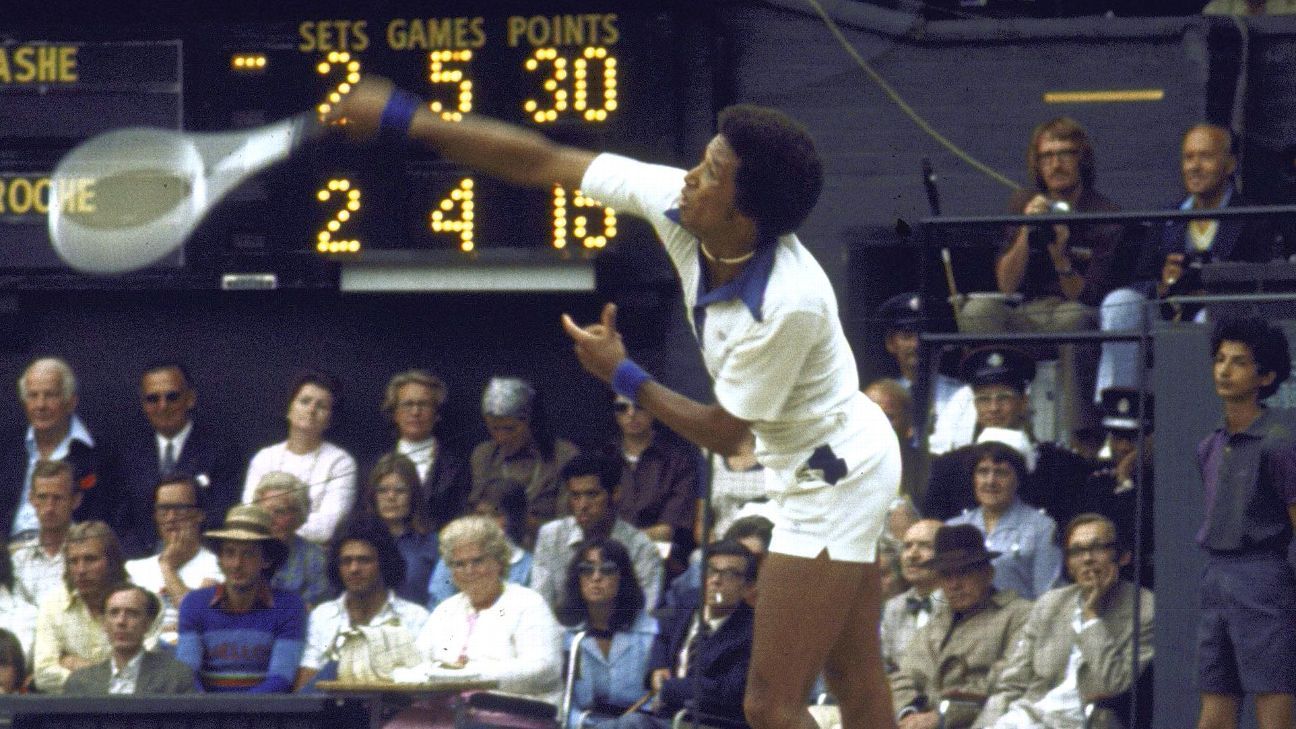WIMBLEDON, England — The landmark triumph of Arthur Ashe over Jimmy Connors in the 1975 Wimbledon final remains one of the most revered moments in tennis history. On that unforgettable day, Ashe pulled off an extraordinary tactical masterclass, defeating the then-world No. 1 with a scoreline of 6-1, 6-1, 5-7, 6-4. This victory marked Ashe as the first Black man to secure the esteemed Wimbledon title.
Ashe’s performance was a significant departure from his usual game characterized by aggressive serving and powerful strokes. Instead, he employed a strategy that involved careful placement and deceptive slice shots, keeping Connors off balance and denying him the fast-paced rallies he thrived on. The match not only secured Ashe’s place in tennis history but also demonstrated the effectiveness of strategic play against an opponent known for his strength.
However, the trajectory of the 1975 tournament could have altered greatly had Roscoe Tanner, Ashe’s fellow American player, followed Ashe’s advice in a semifinal match against Connors. Tanner reminisced about their time spent together during Wimbledon, sharing insights and strategies over dinner. The duo would often head to the Playboy Club after matches, where Ashe would offer Tanner tips on facing Connors, emphasizing the need to disrupt Connors’ rhythm with slow, angled shots.
Tanner, recalling the semifinal clash, noted that the initial foray into this altered style resulted in a quick defeat, as he struggled against Connors’ formidable play. Despite his familiarity with Connors from their junior days, Tanner found that he fell into the trap of attempting to adopt Ashe’s tactical advice, which ultimately did not align with his aggressive playing style. After losing the first two sets decisively, Tanner began to revert back to his own game, only managing to muster a competitive spirit in the third set.
Looking back, Tanner expressed admiration for Ashe’s ability to succeed with a style counter to his natural instincts. He acknowledged how Ashe’s ability to play a patient, tactical game defeated Connors, who generally fed off his opponents’ power.
In 1976, Tanner faced Connors again, this time approaching the match with a revived commitment to his own style of play. Embracing his natural aggressive game, Tanner triumphed over Connors in straight sets, reflecting the lessons learned from the previous year’s experience.
Ashe’s victory remains emblematic not only for what it represented socially but for the tactical evolution it introduced to the sport. The contrasting approaches of Ashe and Tanner highlight the dynamic nature of tennis, where players must constantly adapt their strategies to challenge their opponents effectively.



